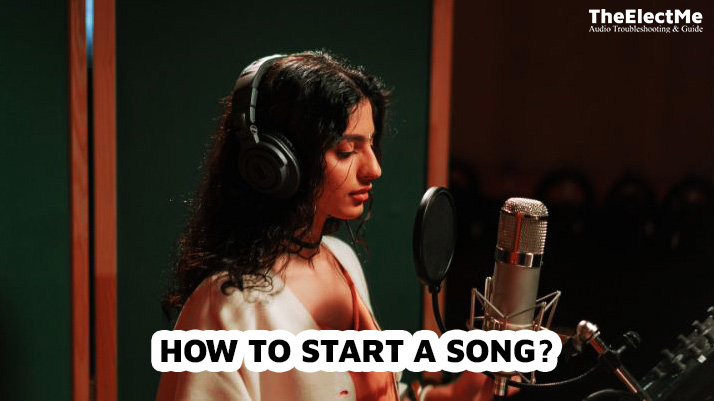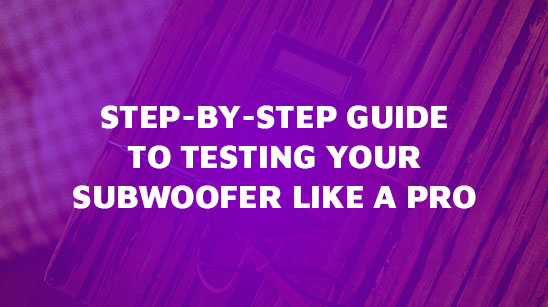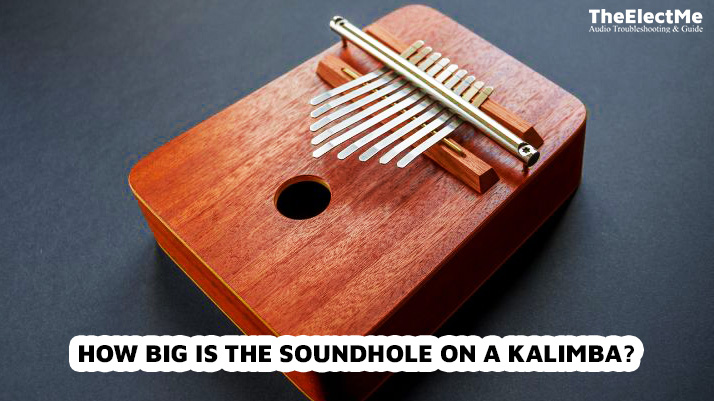Starting a song is much like threading beads to create a necklace. Just as each bead contributes to the overall beauty, every note, chord, and lyric plays a crucial role in the composition of a song. The start of a theme sets the tone, drawing listeners in and paving the way for what’s to come.
But how to start a song? How do you compose something that captivates your intended audience and reflects your unique style and message?
Let’s start with a basic understanding of songwriting.

Understanding The Basics Of Songwriting
Before diving into the methods of starting a song, it’s vital to grasp the basic structure that most songs adhere to. This includes the verse, chorus, and bridge.
1) Verse
Typically, in the first part of a song, the verse sets the scene and introduces the listener to the story or message being conveyed. It usually has a consistent melody and chord progression.
2) Chorus
The chorus, the most memorable part of a song, is typically repeated after each verse. It often contains the main message or theme of the music and has a catchy melody.
3) Bridge
This section adds a new element to the song, briefly breaking from repeating the verse and chorus. It often changes the mood or perspective of the song before leading back into the chorus.
Each element works together to create a complete narrative, much like chapters in a book. Now, let’s explore 7 methods for starting a song incorporating these critical components.
How To Start A Song:7 Methods Every Songwriter Must Know
To start a song, you must have an idea or inspiration sparking your creativity. Once you have that, try one of these methods to bring your song to life.
Method 1 – Starting with a Hook
A hook is one of the most effective ways to start a song. A hook is like the bait that catches the listener’s attention, compelling them to dive deeper into the song.

In songwriting, a hook is a catchy musical idea, like a short riff or phrase, that grabs the listener’s attention and makes a song appealing. The term generally applies to popular music, mainly rock, R&B, hip-hop, dance, and pop. The hook is often found in, or consists of, the chorus in these genres.
Examples of hooks can be found in many famous songs. For example, the repetitive guitar riff in Deep Purple’s “Smoke on the Water” or the catchy chorus in Dua Lipa’s “Don’t Start Now” serve as hooks.
How to Write a Catchy Hook?
Creating an engaging hook requires creativity and a keen understanding of what captivates listeners. Here are some tips and techniques to help you write a catchy chorus:
- Keep it simple: The best hooks are often simple and easy to remember. Think of the hook as the ‘headline’ of your song – it should be catchy and convey the central theme of your music concisely.
- Make it unique: While simplicity is vital, your hook should also be unique and distinctive. It should stand out from other song parts and be easily identifiable.
- Repeat it: Repetition is a powerful tool in songwriting. Repeating your hook throughout the song ensures it sticks in the listener’s mind.
- Match it to the melody: Your hook should complement the melody of your song. It should flow seamlessly with the rest of your music, enhancing the overall musical experience.
Method 2 – Drawing Inspiration From Personal Experiences
One of the most authentic ways to start a song is by drawing inspiration from personal experiences.
Personal experiences can inspire great songs by offering raw, genuine emotions that listeners can connect with. As Taylor Swift advises new songwriters, using past relationships and personal experiences can inspire great song ideas.
How to Turn Experiences into Lyrics?
Transforming personal experiences into compelling lyrics requires introspection, creativity, and a touch of vulnerability. Here are some techniques to help you along this process:

- Reflect on your experiences: Take some time to reflect on your experiences, the emotions they evoked, and the lessons they taught you. This reflection can provide the raw material for your lyrics.
- Use vivid imagery: Make your lyrics more engaging by using vivid imagery. Instead of stating facts, paint a picture with your words to help the listener visualize your experience.
- Be authentic: Authenticity resonates with listeners. Don’t shy away from expressing your true feelings and thoughts. This authenticity can turn a good song into a great one.
- Craft a narrative: Stories captivate listeners. Try to craft a narrative with your lyrics, taking the listener on a journey through your experiences.
Method 3 – Using A Chord Progression Or Riff
Another effective way to start writing a song is by beginning with a chord progression or a riff.
A chord progression is a sequence of chords that is the harmonic backbone of a song. It’s part of the song that gives it its ‘feel’ or ‘mood.’

Conversely, a riff is a repeated chord progression or refrain often played by the rhythm section instruments or solo instruments. Variations can be simple or complex, but they are always memorable.
Tips for Creating Your Chord Progression or Riff
Creating an original chord progression or riff requires a basic understanding of music theory, creativity, and experimentation.
Here are some tips to help you make your own:
- Learn the basics of music theory: Understanding the basics of music theory, such as scales and chord structures, can give you a solid foundation for creating your progressions or riffs.
- Experiment with different chord combinations: Feel free to experiment with different chord combinations. Sometimes, the most unexpected combinations can produce the most exciting sounds.
- Keep it simple: Remember, the best riffs and progressions are often the simplest ones. Aim for something easy to play and remember but still catchy and distinctive.
- Consider the mood of your song: The chord progression or riff you choose should match the mood of your song. For example, a minor chord progression might be suitable for a sad song, while a significant chord progression would be more fitting for a happy theme.
Method 4 – Starting with a Melodic Idea
Beginning your songwriting process with a melodic idea can be an excellent approach.
Melody is a critical component of song composition. It’s the tune that a person hums or sings, making it a vital part of the song’s identity. Melodies can evoke emotions and create moods, making them a powerful tool for conveying the song’s message.
Techniques for Developing a Melodic Idea
Creating and expanding on a melodic idea requires creativity, musical knowledge, and experimentation.

Here are some techniques to help you along this process:
- Consider the song’s mood: The melody should reflect the mood of your song. For example, a primary key melody might suit a cheerful piece, while a minor melody could work for a sad song.
- Add variation: While repetition is essential in creating a memorable melody, adding variations can keep the listener engaged and prevent the song from becoming monotonous.
- Develop your melody: Once you have a basic melodic idea, develop it further. This could involve adding harmonies, changing the rhythm, or altering the melody’s phrasing.
Method 5 – Writing Lyrics First
Starting the songwriting process with lyrics can be an effective method for some songwriters.
Lyrics play a crucial role in songwriting, conveying the song’s message and story.
Well-written lyrics can evoke emotions, provoke thought, and connect with listeners personally. They are the vessels through which a songwriter expresses ideas, feelings, and observations.

Tips for Writing Lyrics
Writing compelling lyrics requires creativity, a good grasp of language, and a willingness to delve into your emotions.
Here are some techniques to help you write songs:
- Know your message: Know what you want to say before writing. Having a clear message can guide your lyric writing process.
- Show, don’t tell: Instead of plainly stating emotions, show them through actions, situations, or metaphors. This technique can make your lyrics more powerful and relatable.
- Keep it simple and authentic: Simplicity and authenticity resonate with listeners. Keep your language simple, and don’t shy away from expressing your true feelings and experiences.
- Edit and revise: Expect your lyrics to be flawed on the first try. Editing and revising are essential parts of the writing process. Be open to changes and improvements.
Method 6 – Using a Songwriting Prompt
Songwriting prompts are ideas or suggestions that inspire you to write a song. They can come in many forms, such as a phrase, a word, a picture, or musical chord progression. For example, a prompt might suggest writing a song about a particular emotion, event, or perspective.
Prompts can serve as a starting point for your songwriting process. They can help you overcome writer’s block by providing a focus for your song. Even if the prompt doesn’t directly relate to the final song, it can stimulate your creativity and get the ideas flowing.

Using Prompts Effectively
Here are some tips for using songwriting prompts effectively:
- Be open-minded: Refrain from dismissing a prompt because it only resonates with you after some time. Sometimes, the most unassuming prompts can lead to the most creative songs.
- Don’t limit yourself to the prompt: Use the prompt as a starting point, but feel free to use it. Let your creativity take over, and see where the prompt leads you.
- Experiment with different types of prompts: Try different types of prompts to see what works best for you. Certain types of prompts inspire you more than others.
- Combine prompts: If one prompt isn’t enough, try combining two or more prompts. This can lead to exciting and unexpected song ideas.
Method 7 – Collaborating with Others
Collaboration can be a powerful tool in the songwriting process. Working with others can provide fresh perspectives, spark new ideas, and lead to creative growth.
Collaborating in songwriting brings fresh perspectives, complements strengths, boosts creativity, and provides feedback for better quality.

Tips for Successful Collaboration
Collaborating on songwriting can be challenging, but these tips can help ensure a successful partnership:
- Clear and open communication is vital. Be honest about your ideas and feedback, and respect your collaborator’s thoughts.
- Be willing to compromise and adapt your ideas. Remember, collaboration is about working together to create something great, not just imposing your thoughts on the other person.
- Collaborating takes time. Be patient with the process and with each other.
- Recognize and celebrate what each person brings to the table. This can create a positive and productive working environment.
Conclusion- How To Start A Song
Songwriting is an art form that requires creativity, skill, and a willingness to experiment. We’ve discussed seven methods to start a song:
- Starting with a title
- Using a lyric-first approach
- Beginning with a melody
- Building around a chord progression
- Working from a central theme or concept
- Utilizing songwriting prompts
- Collaborating with others
Each method offers unique benefits and can lead to the creation of compelling and original songs. Some may resonate more with you, but the key is experimenting and finding what works best for your creative process.
Songwriting is a journey; these methods are tools you can use to create your unique musical expressions. Keep exploring, keep writing, and most importantly, enjoy the process.



